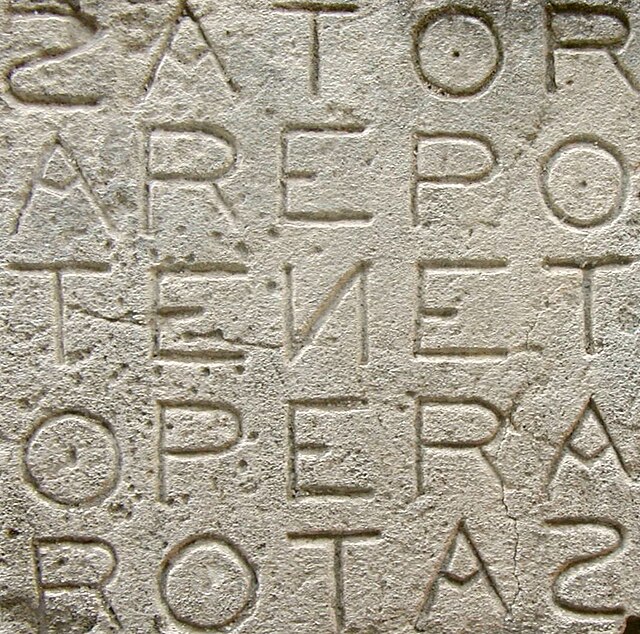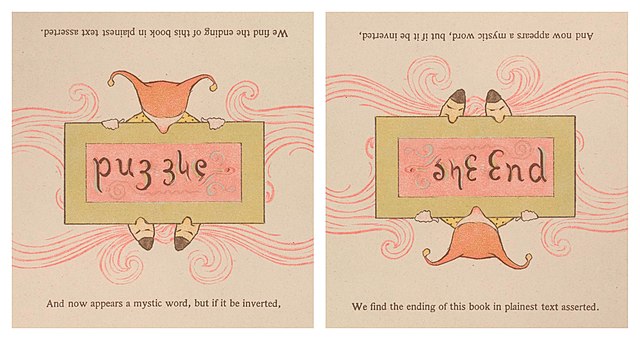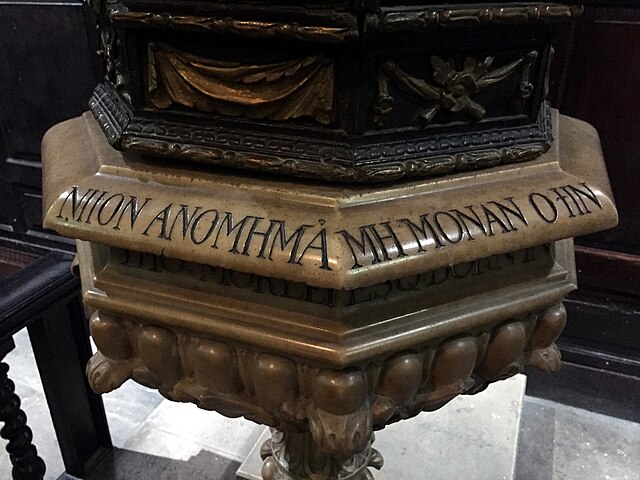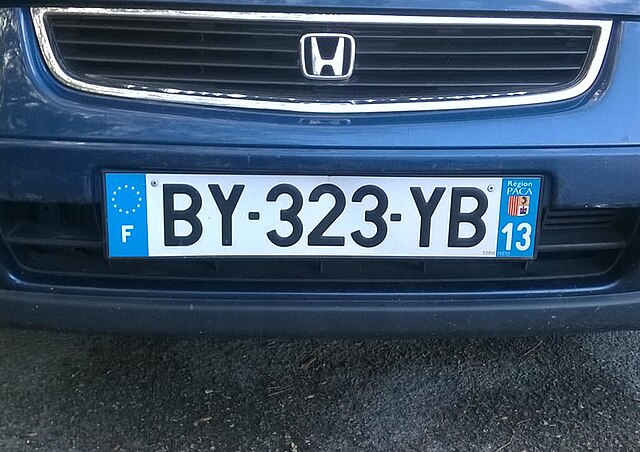An ambigram is a calligraphic composition of glyphs that can yield different meanings depending on the orientation of observation. Most ambigrams are visual palindromes that rely on some kind of symmetry, and they can often be interpreted as visual puns.
Sator square (word square and palindrome) with the letters S and N reversed.
Rotational ambigram Puzzle / The end by Peter Newell designed in 1893.
Mirror ambigram ΝΙΨΟΝ ΑΝΟΜΗΜΑΤΑ ΜΗ ΜΟΝΑΝ ΟΨΙΝ (Wash your sins, not only your face, in Ancient Greek) in the monastery of Panayia Malevi [el].
Ambigrams published in The Strand Magazine, June 1908.
A palindrome is a word, number, phrase, or other sequence of symbols that reads the same backwards as forwards, such as madam or racecar, the date "22/02/2022" and the sentence: "A man, a plan, a canal – Panama". The 19-letter Finnish word saippuakivikauppias, is the longest single-word palindrome in everyday use, while the 12-letter term tattarrattat is the longest in English.
The 4th-century Greek Byzantine palindrome: ΝΙΨΟΝ ΑΝΟΜΗΜΑΤΑ ΜΗ ΜΟΝΑΝ ΟΨΙΝ (Wash Your Sins, Not Only Your Face) on a mosaic in the Monastery of Malevi [el] in Greece.
A Sator square (in SATOR-form), on a wall in the medieval fortress town of Oppède-le-Vieux, France
Nipson anomēmata mē monan opsin palindrome, on a font at St Martin, Ludgate
Palindromic license plate number



![Mirror ambigram ΝΙΨΟΝ ΑΝΟΜΗΜΑΤΑ ΜΗ ΜΟΝΑΝ ΟΨΙΝ (Wash your sins, not only your face, in Ancient Greek) in the monastery of Panayia Malevi [el].](https://upload.wikimedia.org/wikipedia/commons/thumb/1/1a/Ambigram_palindrome_%CE%9D%CE%99%CE%A8%CE%9F%CE%9D%CE%91%CE%9D%CE%9F%CE%9C%CE%97%CE%9C%CE%91%CE%A4%CE%91%CE%9C%CE%97%CE%9C%CE%9F%CE%9D%CE%91%CE%9D%CE%9F%CE%A8%CE%99%CE%9D_%28Wash_your_sins%2C_not_only_your_face%2C_in_Greek%29.jpg/640px-Ambigram_palindrome_%CE%9D%CE%99%CE%A8%CE%9F%CE%9D%CE%91%CE%9D%CE%9F%CE%9C%CE%97%CE%9C%CE%91%CE%A4%CE%91%CE%9C%CE%97%CE%9C%CE%9F%CE%9D%CE%91%CE%9D%CE%9F%CE%A8%CE%99%CE%9D_%28Wash_your_sins%2C_not_only_your_face%2C_in_Greek%29.jpg)


